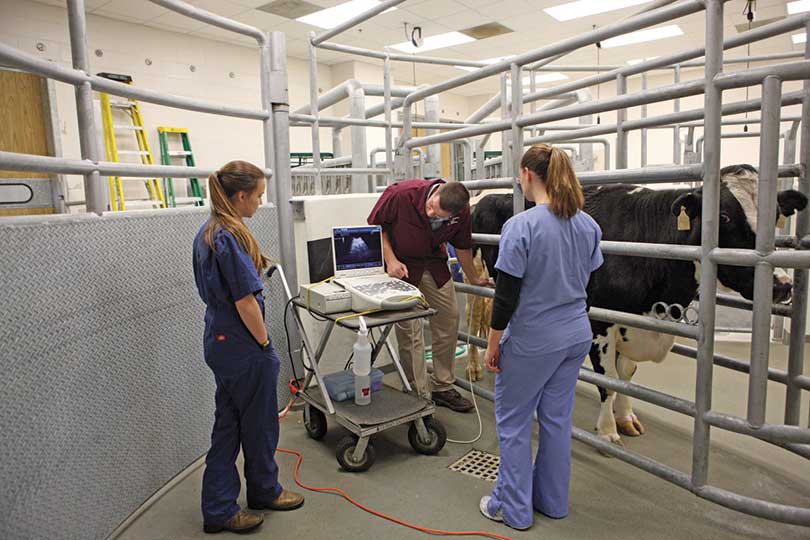Regions all across the U.S. are struggling to meet the demand for food animal veterinarians due to widespread shortages. The U.S. Department of Agriculture’s (USDA) National Institute of Food and Agriculture (NIFA) is working to fill those shortage needs through a loan repayment assistance program.
A leading cause for the shortage is the high cost of professional veterinary training that leaves current graduates of veterinary colleges with, on average, student loan debt of more than $135,000.
Since 2010, NIFA’s Veterinary Medicine Loan Repayment Program (VMLRP) helps American veterinarians repay a portion of their veterinary school loans in return for serving in areas lacking sufficient veterinary resources critical to America’s food safety, food security and to the health and well-being of animals and humans.
“Veterinarians play a critical role in keeping our nation’s food supply safe and animals healthy,” said NIFA Director Sonny Ramaswamy. “The need for veterinarians in designated shortage areas is urgent. This loan repayment assistance program provides incentives for students to take up rural veterinary practices and help take care of American livestock.”
Last week, the USDA awarded more than $4.3 million to 48 American veterinarians, including one Texas recipient in Brazos County.
“The public veterinarian shortage situation in Brazos County comes from difficulty in recruitment and retention with prolonged searches and even an inability to fill vacancies in the Texas A&M Veterinary Medical Diagnostic Laboratory (TVMDL),” Dr. Bruce Akey, TVMDL director, said in a news release. “The trend has increasingly been to fill positions with non-veterinarians due to an inability to attract qualified or interested veterinarians, resulting in loss of critical clinical expertise.”
The Texas recipient will be fulfilling the shortage of public practice (Type III) needs in Brazos County. Type III awards are limited to 10 percent of total nominations and available funds. A total of eight shortage areas in Texas were identified by the Texas Animal Health Commission (TAHC), of which six were Type II and two were Type III.
Participants are required to serve in one of the three types of shortage situations.
- Type I are private practices dedicated to food animal medicine at least 80 percent of the time.
- Type II are private practices in rural areas dedicated to food animal medicine up to 30 percent of the time.
- Type III are dedicated to public practice up to 49 percent of the time.
A map of the veterinary service shortage areas by state is available here.

